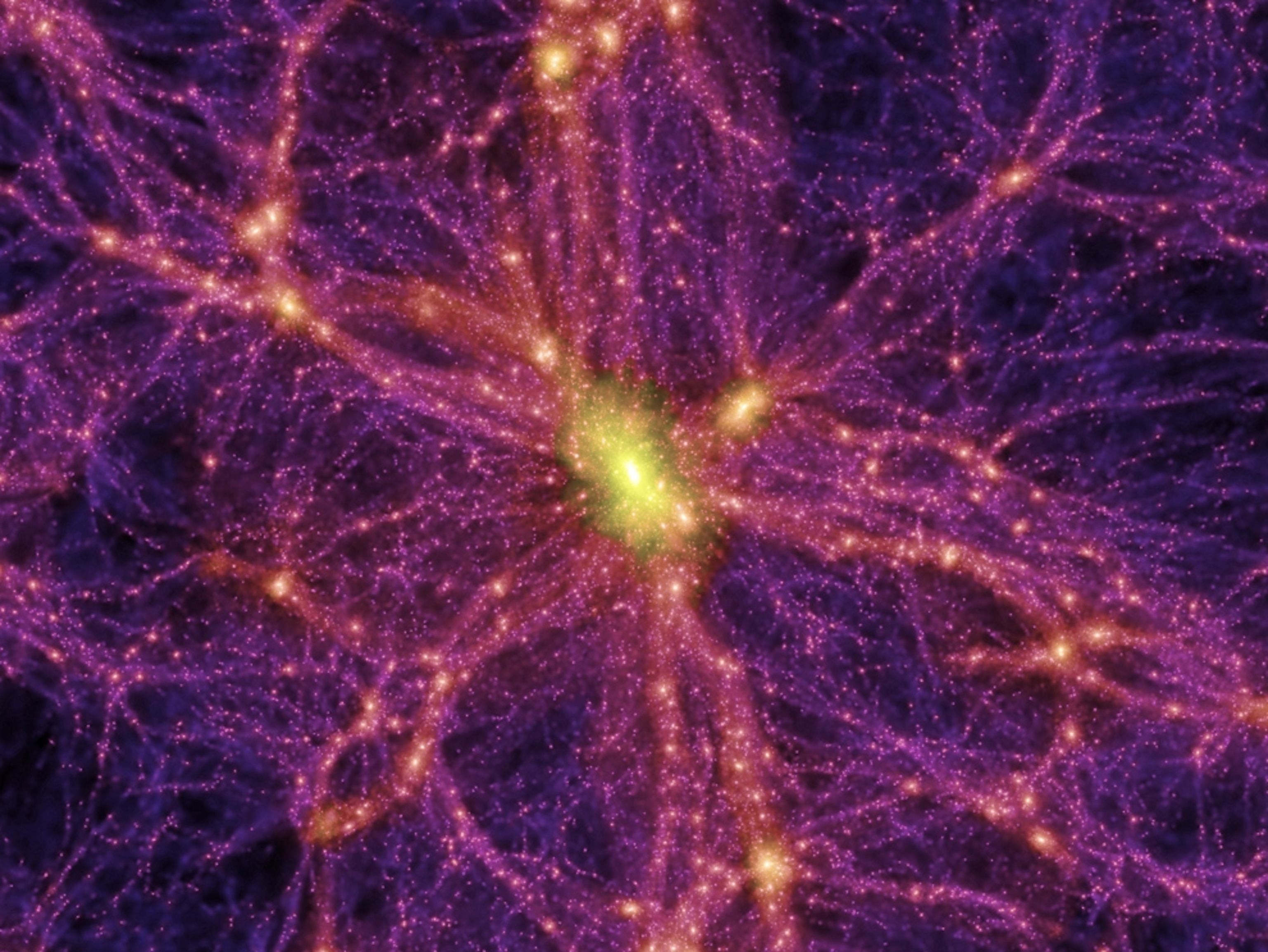Axion quasiparticles represent a fascinating frontier in the quest to decode dark matter, a substance that makes up a significant portion of the universe’s mass yet remains undetected. Theoretical physicists have long proposed the existence of these elusive axions not only as a solution to the mysteries of particle physics but also as crucial components in the composition of dark matter. Recent groundbreaking experiments led by researchers from Harvard and King’s College London are harnessing axion quasiparticles to probe the very nature of dark matter. By simulating these fundamental particles with advanced materials, scientists are paving new paths toward not only detecting axions but also advancing quantum technology. This innovative approach promises to shed light on the enigmatic properties of dark matter and potentially revolutionize our understanding of the cosmos and its fundamental building blocks.
The exploration of axion quasiparticles opens exciting avenues in modern physics, often referred to as hypothetical particles that could explain many astronomical phenomena. These entities, hailed as key candidates for unraveling the secrets of dark matter, have propelled the field of particle research into new realms of possibility. Researchers are leveraging cutting-edge techniques to simulate and detect these particles, enabling them to probe the profound questions surrounding cosmic composition. As these studies unfold, the interplay between axion physics and quantum technologies may lead to remarkable advancements in both theoretical and applied sciences. This pursuit is not only foundational for particle physics but also essential for enhancing our grasp of the universe’s vast, unexplained mysteries.
Understanding Axion Quasiparticles in Astronomy
Axion quasiparticles, a revolutionary concept emerging from recent experiments, present a unique opportunity in the study of dark matter within astrophysics. These entities exist as simulated forms of the elusive axion particles, which are posited as key components in the understanding of dark matter. The exploration of axion quasiparticles extends the frontier of particle physics, where researchers are committed to unlocking the mysteries surrounding dark matter, which constitutes a staggering 85% of the universe’s mass. By harnessing these quasiparticles in a controlled environment, scientists can effectively initiate interactions that mimic the elusive nature of dark matter, moving a step closer to confirming their existence and function in the cosmos.
In practical terms, axion quasiparticles serve as preliminary indicators for detecting their actual counterparts. Researchers are using finely tuned materials, such as manganese bismuth telluride, to create conditions that facilitate the generation of axion quasiparticles. The intricate dynamics of these quasiparticles are not merely theoretical; they offer a promising route towards developing advanced detection technologies that can listen for faint signals indicative of dark matter interactions. By understanding the behaviors and interactions of axion quasiparticles, scientists may soon unravel the cosmic puzzles tied to dark matter’s pervasive influence.
The Role of Axions in Dark Matter Investigations
The search for dark matter has guided many scientific endeavors, and axions have emerged as leading candidates for this mysterious substance. As theorized by physicist Frank Wilczek, axions potentially fulfill the dual role of explaining certain phenomena in particle physics and resolving the perplexing issue of dark matter. This relationship highlights the significance of confirming axions as fundamental particles, which could offer enhanced clarity about the universe’s formation and its underlying composition. The recent advances in axion research signal a resurgence in interest comparable to that seen in the years leading to the discovery of the Higgs Boson.
Moreover, the innovative use of axion detection technologies, bolstered by axion quasiparticles, holds the key to bridging gaps in our understanding of cosmic evolution. The approach of tuning into specific frequencies emitted by axions can potentially lead researchers to observe interactions that have previously evaded detection efforts. Such advancements not only contribute to particle physics but also stand to foster breakthroughs in quantum technology, elevating our capacity to engage with the dark matter enigma and impacting scientific discourse across multiple disciplines.
Innovative Techniques for Axion Detection
The ingenuity displayed in the experimental methods for detecting axions represents the cutting-edge of scientific exploration. Researchers are now utilizing ultrafast laser optics and sophisticated measurement tools to monitor axion quasiparticles’ behaviors in real-time. By creating a unique two-dimensional crystal structure of manganese bismuth telluride, scientists have developed a platform that optimizes the conditions necessary for observing the elusive dynamics of these quasiparticles. This meticulous approach not only sharpens the precision of measurements but accelerates the quest for effective dark matter detection methodologies.
The implications of these techniques reach further than mere experimental validation; they offer transformational solutions for emerging quantum technologies. The exploration of axion recognition, particularly through interactions within customized materials, paves the way for novel applications across multiple technological spheres. As researchers refine their strategies, the vision of a highly sensitive detector, capable of unveiling dark matter signals within our universe, becomes increasingly attainable, promising new insights into the composition of dark matter.
Impact of Quantum Materials on Particle Physics
The intersection point of quantum materials and particle physics has enormous implications, particularly in advancing our grasp of the universe’s composition. The role of materials like manganese bismuth telluride illustrates how choosing appropriate substances can harness quantum behaviors beneficial for axion research. The delicate properties of these materials enable a more profound understanding of axion quasiparticles, reflecting a broader shift towards emphasizing material science in tackling foundational questions about dark matter and cosmic evolution.
As research continues to unravel the properties of these quantum materials, they may unlock unprecedented avenues for scientific inquiry and technological innovation. These advancements extend beyond just particle detection; they offer potential in revolutionizing fields such as quantum computing and imaging. The relationship between quantum materials and the exploration of axions signifies a pivotal moment in modern physics, where cross-disciplinary collaborations can provide solutions to the profound enigmas surrounding dark matter.
Future Directions in Axion Research
The future of axion research is poised for rapid advancements, as current experimental approaches yield promising results. Scientists are not only focused on confirming the existence of axions but are also keen on expanding the frontier of knowledge surrounding their properties and interactions. Striving for breakthroughs in axion dark matter detection is a shared goal among the scientific community, emphasizing a collaborative spirit crucial for tackling complex challenges within particle physics.
Continued exploration of axion quasiparticles and their applications is set to revolutionize the understanding of quantum technologies and dark matter physics. By refining experimental setups and employing cutting-edge materials, researchers envision more precise measurements that could lead us to direct evidence of dark matter within approximately 15 years. Such endeavors signify an exciting era for physicists dedicated to uncovering the secrets of the universe, ultimately enriching our understanding of matter and the fabric of cosmic existence.
Theoretical Foundations of Axion Models in Physics
Theoretical models surrounding axions have laid the groundwork for a deeper exploration of fundamental questions in physics. Propounded as solutions to the issues of charge and symmetry violations, axions are rich in interpretive possibility within particle physics. Their role as candidates for dark matter has guided a broad spectrum of research aimed at uncovering their properties and functionalities. This theoretical underpinning complements practical experimentation, creating a feedback loop that bolsters both conceptual and empirical advancements in the field.
The frameworks developed over decades outline the anticipated behaviors of axions, stimulating experimental designs that bridge the gap between hypothesis and observation. As scientists with unique interdisciplinary viewpoints converge to study axion models, new insights will inevitably emerge, guiding us closer to confirming their existence and elucidating the characteristics governing dark matter. The interplay between theory and experiment emphasizes the richness of ongoing research endeavors in advancing our understanding of the universe.
Interdisciplinary Approaches in Modern Physics
The current landscape of research in physics emphasizes the significance of interdisciplinary approaches, particularly significant in the study of axions and dark matter. Combining expertise from condensed-matter physics, material science, and high-energy physics, researchers have created a collaborative framework that enhances analytical precision and fosters innovative solutions. This synergy is vital in unraveling the complexities of axion quasiparticles and their potential to reveal new cosmic phenomena.
Moreover, this interdisciplinary outlook not only aids in dark matter research but also promotes advances across various scientific fields. By integrating knowledge and methodologies from distinct disciplines, scientists position themselves to tackle intricate questions that have long resonated within the scientific community. The collective effort to study axions highlights the importance of cross-pollination between disciplines, emphasizing the potential for groundbreaking discoveries in both fundamental physics and applied technologies.
Observational Strategies for Axion Signals
Establishing effective observational strategies for capturing axion signals remains a priority within the scientific community. Given the elusive nature of dark matter and axion interactions, researchers are tailoring their detection methods to enhance the sensitivity of their instruments. By tuning into specific radio frequencies that may be emitted by axions, scientists hope to develop highly accurate detectors capable of discerning faint signals from the cosmic background.
These observational strategies stem from the intersection of theoretical predictions and practical experimentation. The insights gleaned from axion quasiparticles allow researchers to strategically refine their search parameters, ensuring that they maximize the potential for successful detection. The rigorous commitment to adapting experimental setups based on evolving theories exemplifies the adaptive nature of modern physics research and its ongoing quest to unlock the mysteries of dark matter.
The Importance of Funding in Advancing Axion Research
The journey towards confirming the existence of axions and enhancing dark matter detection technologies is significantly propelled by ample funding and resource allocation. Support from prestigious institutions like the U.S. Department of Energy and the National Science Foundation underscores the high stakes involved in axion research. Financial backing not only facilitates the procurement of materials and advanced scientific equipment but also fosters collaborative opportunities among leading experts in the field.
As researchers continue to push the boundaries of what is known in particle physics and astronomy, sustained investment is critical for translating theoretical knowledge into tangible results. Continued support from funding agencies can accelerate discoveries related to dark matter and validate theoretical models surrounding axions. Ultimately, securing financial resources is paramount for fostering pioneering work that contributes to the broader narrative of understanding the universe.
Frequently Asked Questions
What are axion quasiparticles and their significance in particle physics?
Axion quasiparticles are theoretical simulations of axion particles, which are considered leading candidates for dark matter. They play a crucial role in understanding the composition of the universe and could help clarify fundamental questions in particle physics related to dark matter.
How do researchers detect axion quasiparticles in experiments?
Researchers detect axion quasiparticles by using specialized materials, such as manganese bismuth telluride, to create a 2D crystal structure. When a hypothetical dark matter axion interacts with this material, it excites the quasiparticle, allowing scientists to observe the resulting reaction with advanced techniques like ultrafast laser optics.
Why are axion quasiparticles considered potential dark matter detectors?
Axion quasiparticles can act as advanced detectors for dark matter because they can interact with dark matter axions, producing detectable signals. This interaction has been described as akin to a ‘cosmic car radio,’ which can tune in to specific radio frequencies emitted by dark matter axions, potentially leading to new discoveries in particle physics.
What role does quantum technology play in the study of axion quasiparticles?
Quantum technology plays a pivotal role in the study of axion quasiparticles by allowing for the manipulation and observation of their intricate dynamics within materials. Innovations in quantum materials enable precise measurements that can uncover the properties of axions, furthering our understanding of dark matter and potential applications in future technologies.
How do axion quasiparticles relate to dark matter theories?
Axion quasiparticles are intrinsically linked to dark matter theories as they are hypothesized to be manifestations of axions, proposed as dark matter candidates. Confirming their existence could reshape our understanding of dark matter and the underlying structure of the universe.
What advancements have been made in the research of axion quasiparticles recently?
Recent advancements include successful experiments that have demonstrated the coherent behaviors of axion quasiparticles, as detailed in studies by a team from Harvard University. These experiments utilized innovative materials and techniques, paving the way toward refining our approaches to detect dark matter in the future.
What future research directions are planned for axion quasiparticles?
Future research will focus on refining experimental techniques to enhance the detection of axion dark matter. Researchers aim to explore the properties of axion quasiparticles further, which could lead to significant breakthroughs in both theoretical particle physics and practical applications in quantum technology.
What implications does the existence of axion quasiparticles have on our understanding of the universe?
The existence of axion quasiparticles could provide profound insights into dark matter, which constitutes about 85% of the universe’s mass. By confirming their presence, researchers could gain a better understanding of the universe’s composition and its fundamental physics.
| Key Point | Details |
|---|---|
| Detection of Axions | Researchers utilize quasiparticles to hunt for axions, a proposed component of dark matter. |
| Quasiparticle Functionality | Axion quasiparticles act as detectors for dark matter axions by identifying their interactions with materials. |
| Material Used | Manganese bismuth telluride is engineered into a 2D structure to establish a platform for axion quasiparticles. |
| Experimental Techniques | Ultrafast laser optics and innovative measurement tools were employed to visualize quasiparticle behavior. |
| Implications for Dark Matter | The research enhances understanding of dark matter and aims to develop precise detection methods. |
| Future Research | Plans to refine experiments and explore axion quasiparticles further to enhance detection capabilities. |
Summary
Axion quasiparticles are making significant strides in advancing our understanding of dark matter. By utilizing innovative techniques and materials, researchers have taken a crucial step towards confirming the existence of axions, which could revolutionize our grasp of the universe’s composition. As the journey to detect these elusive particles continues, the potential applications in quantum technologies and dark matter detection shine a promising light on future discoveries.



